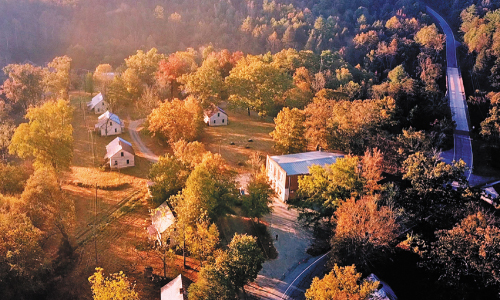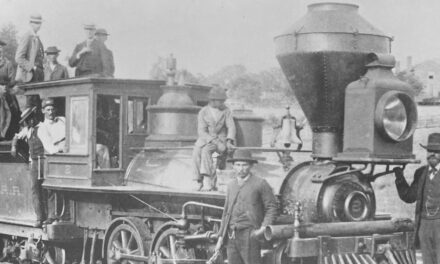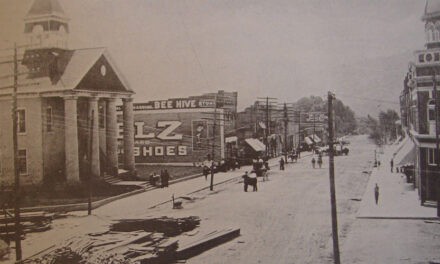
The Henry River Mill Village is once again popping with activity. The Magnolia Network chronicled the revitalization of one of the mill houses on their show, In With the Old. The Science Channel also shot an episode there for Mysteries of the Abandoned. All the while tours take visitors on a walkthrough of the village where they also talk about the shooting of The Hunger Games film in 2011 when the site stood in for District 12. Go, take a tour. It’s great fun.
However, a shooting of a different kind offers another historical view of the village. On a hot summer night in August of 1966, a 62-year-old resident started raising a ruckus. The Burke County Sheriff’s office was called out to see why gunshots were being fired in an otherwise generally peaceful, little neighborhood. Deputy Joe Burns attempted to serve a warrant for disturbing the peace when he was shot in the arm. According to witnesses, the shooter said, “I give up” then hit changed his mind. Burns called for backup.
That’s when Sheriff David Oaks drove down from his home near Jonas Ridge to see what all the commotion was about. When he got there, Highway Patrol troopers and other deputies were on the scene. They had shot teargas into another house where the assailant was hold up. Sheriff Oaks kicked open the door and told the gunman to surrender. The perpetrator of the disturbance was lying on the floor, under the haze of teargas. But upon seeing the sheriff, he aimed his .22 rifle upwards and shot Oaks twice, once in the neck.
Oaks reeled back and said, “boys, I’m hit and hit bad.” Those were his last words. The effort to get him to Valdese Hospital wasn’t fast enough. He died on the way. Sheriff Oaks had a reputation as a bold law enforcement officer. Much of his reputation was built on a series of moonshine still-busting raids.
The perpetrator ran but before morning one of several search parties found him in another mill house, trying to hide. He was bound over for trial and in the summer of ’67 and found guilty of murder. Instead of the death penalty, he was sentenced to life. But by 1973, while out on a 12-hour leave, he escaped. Later found, he was eventually paroled. The assailant died in 1989, 23 years after the crime.
The event points up how some places have more than one story to tell. Actually, the death of Sheriff Oaks and District 12 are just additional incidents to the very rich epic of the Henry River Mill Village. It was a world unto itself for the multitudes of families who lived there, all working for the mill and living within hollering distance of each other. Among the artifacts still standing are some of the houses (one refurbished) and the general store.
Calvin Reyes and his family have done a wonderful job of keeping this history alive. They are preserving an artifact of our history, when many of these families came off the farm to take on the tasks of industrialism. With them came the stories of how they lived together as they struggled to make a living in a cotton mill. Most did so peacefully, until the night of August 21, 1966 when the place became a crime scene. Just another story hidden in the world of the Henry River Cotton Mill Village.
Photo: The Henry River Mill Village as it looks today.









